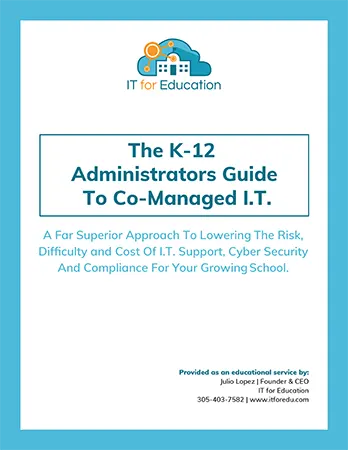 Assistive Technology in Education
Assistive Technology in Education
Have you ever imagined a classroom where every student, regardless of their abilities, has access to learning tools tailored to their needs? That's the promise of assistive technology in education. It's about breaking down barriers and opening up a world of possibilities for all students.
As K-12 schools implement one-to-one device programs, they can introduce more assistive technologies into classrooms and promote equity without creating a divide among students who feel singled out.
The Rise of One-to-One Programs
In recent years, there has been a rise in one-to-one programs where each student gets a digital device, such as a tablet or laptop, ensuring personalized and accessible learning.
One-to-One Program Device Management
But with great technology comes great responsibility. How do schools manage dozens, if not hundreds, of devices? This is where efficient device management and monitoring come into play, ensuring each device is used to its full potential and maintained correctly.
School administrators, recognizing the need for effective device management, often partner with MSPs to address technical challenges, monitor device usage, and ensure seamless integration of assistive technology in the learning environment. Think of it as a digital guardian angel for every device in the school.
Ensuring Accessibility and Inclusion
Regarding technology in education, accessibility is a crucial factor that cannot be overlooked. At the heart of assistive technology lies the idea of ensuring that every student, regardless of their abilities or disabilities, can fully participate in their education. This requires a diverse range of tools and technologies that cater to a wide variety of needs. For example, students with hearing impairments may require closed captions or sign language interpretation in their videos, whereas students with visual impairments may require screen readers or audio descriptions. Similarly, students with mobility impairments may require assistive devices that allow them to interact with technology differently. By prioritizing accessibility in education technology, we can ensure that every student has an equal opportunity to learn and succeed.
Training Educators for Effective Implementation
Assistive technology provides students with the support they need to thrive academically and socially. However, implementing these tools isn't as simple as just plugging them in and expecting them to work seamlessly. It is crucial to provide adequate training to teachers to enable them to incorporate assistive technology effectively in their teaching strategies.
While assistive technology can be a powerful tool for promoting inclusion and equity in education, it requires careful planning, training, and implementation. By providing teachers with the necessary support and resources, we can ensure that students with disabilities can access the educational opportunities they deserve.
Balancing Costs and Benefits
Yes, technology can be expensive, but the benefits of inclusive and personalized education that it offers are invaluable. With the help of technology, students from different backgrounds and abilities can access resources and learning materials that are tailored to their needs. This not only enhances their learning experience but also boosts their confidence and motivation to learn. Furthermore, technology enables teachers to track student progress and provide feedback in real-time, which is crucial for effective learning. In short, investing in technology for education is an investment in the future of our society, and it can pay off in countless ways.
The Role of Continuous Feedback
In order to ensure that technology is meeting the ever-changing needs of education, it is crucial to receive continuous feedback from both students and teachers. This feedback serves as a valuable tool in refining the use of technology, allowing for a more effective and efficient learning experience. By taking this approach, educators can stay ahead of the curve and ensure that their students are receiving the best possible education.
Future Trends in One-to-One Device Program
It’s clear that one-to-one programs will have a significant role to play in education. We anticipate the emergence of more sophisticated and advanced technological tools to help students learn more efficiently and effectively. This trend is expected to profoundly impact how students learn, as they will have access to a wider range of resources and be able to work at their own pace.
There is a bright future for assistive technology and one-to-one programs in education, with more integrations and innovations on the way.
Embark on a journey towards educational excellence! Schedule a Discovery Call now and unlock the potential of one-to-one programs, paving the way for a more engaging and personalized learning environment.
What schools have been asking us:
What is the primary goal of integrating assistive technology in schools?
The primary goal is to provide personalized and accessible learning experiences for all students, regardless of their individual needs.
How does device management benefit one-to-one programs?
Effective device management ensures that each device is used optimally, maintained well, and contributes to the overall learning experience.
What role do device monitoring services play in education?
They ensure the safe and effective use of devices, protecting both the technology and the students using them.
Are there specific challenges in training educators to use assistive technology?
Yes, challenges include ensuring educators are comfortable with the technology and can integrate it effectively into their teaching methods.
What should school administrators focus on when implementing assistive technology?
Focus on ensuring accessibility, providing adequate training, balancing costs, and continuously gathering feedback for improvement.



